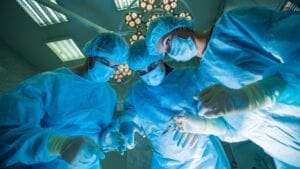Plastic surgery has seen tremendous advancements in recent years, transforming how individuals approach reconstructive procedures. Particularly for breast cancer survivors, the evolution of implant options offers new hope.
MORE NEWS: Ranking Arizona: Top 10 assisted living facilities for 2024
Traditional methods often come with significant drawbacks, from lengthy recovery times to uncomfortable implants that can feel like an ice pack against the skin in cold weather. However, cutting-edge technology is reshaping this landscape, with 3D printing leading the charge.
This article explores how 3D-printed implants, as offered by Deigni Plastic Surgery, are revolutionizing breast reconstruction to help you understand this transformative shift. We will examine the evolution, breakthroughs, and some concerns regarding breast reduction implants and techniques. Let’s dive in.
The Evolution of Breast Reconstruction Techniques
“Breast reconstruction has come a long way from its early days,” says Dr. Olivier Deigni. Historically, options were limited and often invasive, involving either silicone implants or flap surgery that transplanted tissue from another part of the body.
Silicone remains popular due to ease and simplicity, yet it carries risks such as implant loss and frequent replacements. Flap surgery, on the other hand, offers more lasting results but requires extensive procedures and recovery time.
As plastic surgery evolves, newer techniques aim to mitigate breast implant issues. Texas surgeons are now leveraging 3D printing technology to create personalized implants that not only simplify the process but also promise better integration with natural tissues.
Breakthroughs in 3D-Printed Implants
3D printing advancements have introduced revolutionary methods for breast reconstruction. Companies are competing to be at the forefront of developing implants designed to grow new tissue within the body before naturally degrading.
Some advanced implants feature a biopolymer cage that supports tissue growth and eventually dissolves, eliminating long-term complications associated with traditional silicone implants. Conversely, other well-known techniques use hydrogel technology to create soft implants colonized by a patient’s fat cells, providing a more natural feel.
Such innovations not only promise reduced surgery times but also address concerns about foreign materials remaining inside the body. As trials progress, these technologies could redefine post-mastectomy reconstruction options across Texas and beyond.
Customizable Designs for a Natural Look
3D-printed breast implants have an unbelievable advantage; they can be customized for the perfect fit and comfort. When we talk about traditional implants, they come in rigid, standard sizes and do not provide much scope for customization. On the other hand, 3D printing enables the creation of personalized implants that are created according to a patient’s unique body structure. This precision reduces the chances of asymmetry and enhances comfort, resulting in a more natural look and feel for post-reconstruction patients.
Reduced Recovery Times and Less Complications
3D-printed implants also bring promising improvements in recovery and long-term outcomes. Traditional reconstructive surgeries often require extensive downtime and come with potential risks like infection or rejection of the implant. With 3D-printed implants, however, the procedure is less invasive, which typically means a quicker recovery and fewer complications. For patients, this translates into a smoother healing process and a reduced need for follow-up surgeries.
Addressing Patient Concerns and Accessibility
Patients have legitimate concerns about breast reconstruction, from the discomfort of traditional implants to accessibility issues. Silicone implants often require replacements and can cause complications, deterring many women from choosing reconstructive surgery.
Accessibility remains a challenge in Texas, where specialist plastic surgeons are needed for complex flap surgeries. However, 3D-printed implants offer simpler procedures that any skilled plastic surgeon can perform.
Ease of implantation significantly reduces surgical time, making these advanced options more accessible across various medical facilities. Cancer survivors can now look forward to quicker recoveries and fewer complications.
Conclusion
3D-printed implants are totally changing the game for breast reconstruction in Texas. It is all about providing safer, way more comfortable options for people who have had a mastectomy. This new technology is not just advanced, but it is also giving folks better choices and a lot of hope for their post-surgery journey. It is definitely a big leap forward in plastic surgery.




